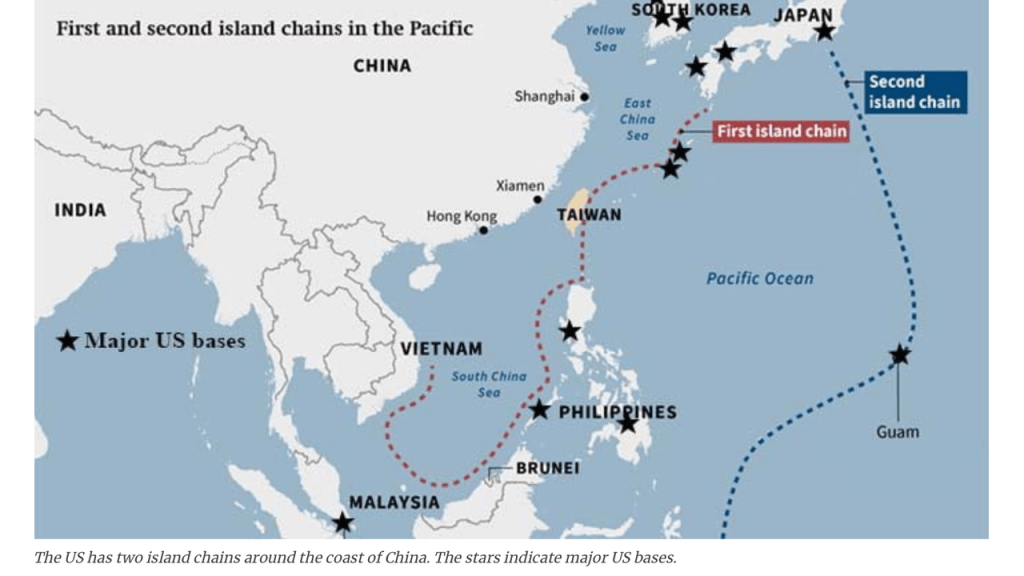The United States has announced it will upgrade U.S. Forces Japan (USFJ) to a joint force headquarters (JFHQ) with expanded operational responsibilities. The new command will report to the US Indo-Pacific Command (USINDOPACOM). The revamped structure will assume the control of about 55,000 personnel stationed in Japan from the U.S. Indo-Pacific Command some 6,200 kilometers away in Honolulu, Hawaii. The move is intended to streamline communications between the US and Japan, especially during a crisis involving China.
Japan-U.S. joint statement on war preparations forecasts doom
Tag: Senkaku islands
Why Are There Fears of War in the South China Sea?
SCS: The Office of Naval Research funded Stanford’s GKC
The Office of Naval Research is an organization within the US Department of Navy. Ray Powell’s Project Myoushu started at Stanford’s GKC. Funny how Powell’s information has disappeared from Stanford’s GKC. The internet never forgets, though!
Lighting Up the Gray Zone: The Philippines-Taiwan Counter-Coercion Toolkit
Perry World House’s Thomas Shattuck and Robin Garcia are out with an important new white paper which recommends the public release of visual information to counter China’s coercive activities, using the Philippines and Taiwan as examples. As the champions of “assertive transparency”, SeaLight enthusiastically welcomes this timely new scholarship!
Lighting Up the Gray Zone: The Philippines-Taiwan Counter-Coercion Toolkit
Perry World House is at the University of Pennsylvania, another university funded by the US government. I’ve updated my Project Myoushu document, to reflect the following:
The origin of Stanford University’s Gordian Knot Center for National Security Innovation. It’s sponsored by the Office of Naval Research, an organization within the Department of Navy. I saw it over at the Asian Century Journal, yesterday.
From a previous post.
Related:
Rick Rozoff – Jul 13 2022 NATO News Summary
Rick Rozoff, AntiBellum, Jul 13 2022
Rick Rozoff – Jul 13 2022 NATO News Summary
As U.S. Threatens War with Russia, Biden Administration Unveils Imperial Strategy for Indo-Pacific That Could Lead to War with China
When it comes to China, our media ‘experts’ need a lot of help
Since the AUKUS nuclear submarine deal our mainstream media experts have doubled down on the claim Beijing is expansionist. Since few of them can read or speak Chinese maybe I can help them.
When it comes to China, our media ‘experts’ need a lot of help
Yesterday’s Wars Didn’t Prepare the Pentagon for Tomorrow’s China + Navy and Marine Exercise to Span 17 Time Zones on a Scale Last Seen During the Cold War
“Unchallenged Orientalism”: Why Liberals Suddenly Love the Lab Leak Theory
“Unchallenged Orientalism”: Why Liberals Suddenly Love the Lab Leak Theory
It is this context in which the return of the lab leak theory should be seen. Lab leaks do happen. But there is precious little hard evidence that such is the case here. That so many of the nation’s top alternative news figures — individuals who stood against U.S. wars and against similar campaigns, such as RussiaGate — are buying into this one is remarkable. This is especially the case in light of the fact that the evidence is so weak and comes from highly discredited sources, while scientists remain highly skeptical of the theory.
…
The lab leak theory bears a striking resemblance to the weapons of mass destruction hoax of 2002-03, not only in the fact that one of its key players is literally the same journalist using potentially the same anonymous sources, but also in the bipartisan political and media support for the project, all while ignoring the opinions of the scientific community. That so many in alternative media who question war and U.S. intervention not only cannot see that, but are invoking the WMD story to bolster their own side, is extraordinary, and shows how badly the need is to build up a healthy media ecosystem.
Between 2001 and 2003, the public was subjected to a constant barrage of pro-war propaganda. But at least nascent alternative media offered a dissenting voice. Anti-war voices pushing the lab leak theory might one day find it is too late to stop the clock on the dangerous drive towards a second Cold War. If there is any conflict with China, it will make Iraq look like a tea party by comparison. But truth, in war, is always the first casualty.
In the South China Sea, Biden is outdoing Trump in bluff and bluster
In the South China Sea, Biden is outdoing Trump in bluff and bluster
Biden’s China policy is turning out to be a continuation of the Trump adminstration’s, possibly trumping it in its hypocrisy, condescension, confrontation and militarism.


You must be logged in to post a comment.